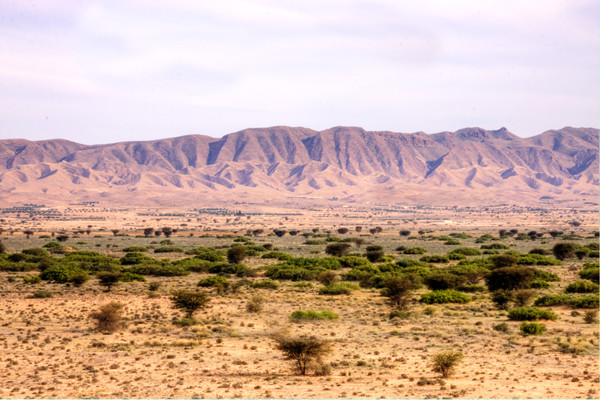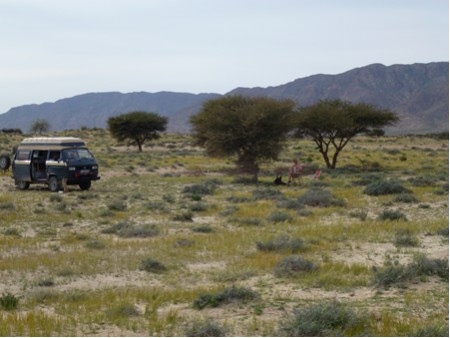Bou-Hedma-Nationalpark
34.4166666666679.5Koordinaten: 34 ° 25 ' N, 9 ° 30' E
The Bou- Hedma National Park is a national park in Tunisia. The park is located 85 km east of Gafsa in the central part of the country. It is located a few kilometers southwest of the city Meknessi in the foothills of the Saharan Atlas.
The reserve is also a Biosphere Reserve and National Park. It covers an area of 170 square kilometers, of which 88 square kilometers make up the core area. The remainder consisting of the buffer zones, and the edge areas. The vegetation is mainly dry Mediterranean, partly steppe. The steppes are the result of degenerate juniper forests. Along rivers and wadis occurs a typical riparian vegetation. In addition, acacia savannas occur. The altitudes range from 80 to 814 m above sea level.
Wildlife
In fenced areas of the reserve, some large animal species have been reintroduced that were once typical of the arid zones of North Africa, but are now almost gone. They include Addax, oryx, dama gazelles and ostriches. The Dama gazelles were reintroduced in the 1990s. In 2006, the stock was specified in the park with 17 units, a year earlier, the existence of scimitar-horned oryx was estimated at about 130 animals. The Addax, by nature, are more adapted to drier desert areas still appear to be inferior to the stronger sable antelope in the area, which led to a population decline of the Addax. Therefore, you have some animals in other protected areas, such as the Jebil National Park and the National Park Senghar transferred.
Also mane sheep are kept in fenced areas. However, some animals escaped into the surrounding areas of the park. Alive in Wild Park comes before the Dorcas gazelle. Other antelope species that are missing today, but are considered as potential modes of the area, are the Cuviergazelle and hartebeest. However, the North African subspecies of Hartebeest is extinct, so you would have to incur for a possible reintroduction to other subspecies.
Terms and human influences
A total of about 1,400 people live in the area, whose population is stable. Through the use as pasture and partly farmland caused problems for the nature of the reserve. Among other things about the erosion is promoted. Meanwhile, the desertification is trying to counter through the support of the original tree and shrub species. In addition, an ecology museum. Especially in the two large fenced areas that are 20 and 10 square kilometers in size, the vegetation has recovered since the overgrazing could be stopped by pets.
Swell
- UNESCO MAB Biosphere Reserves Directory: Djebel Bou- Hedma
- Information about the status of Addax on wildaddax.org










